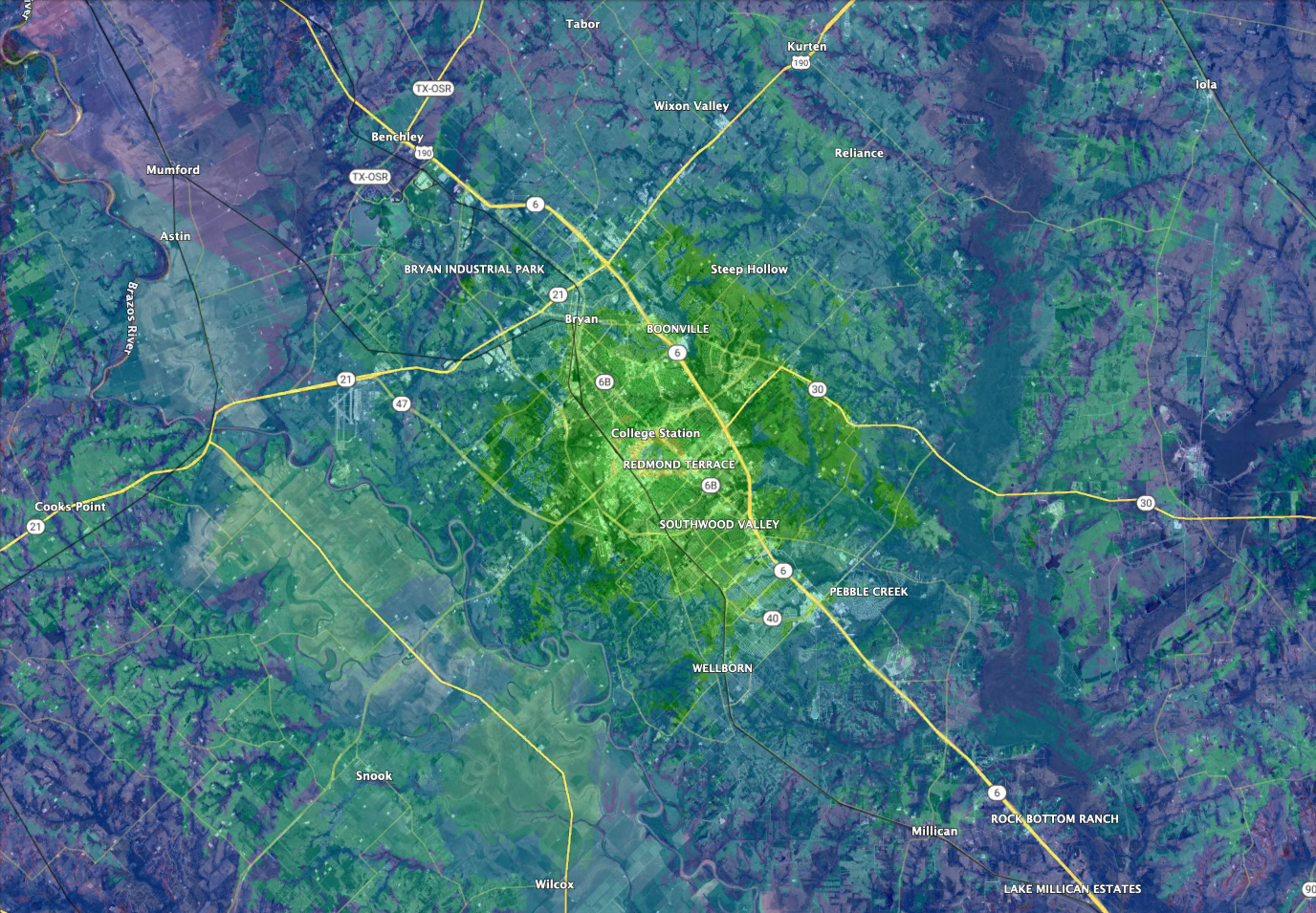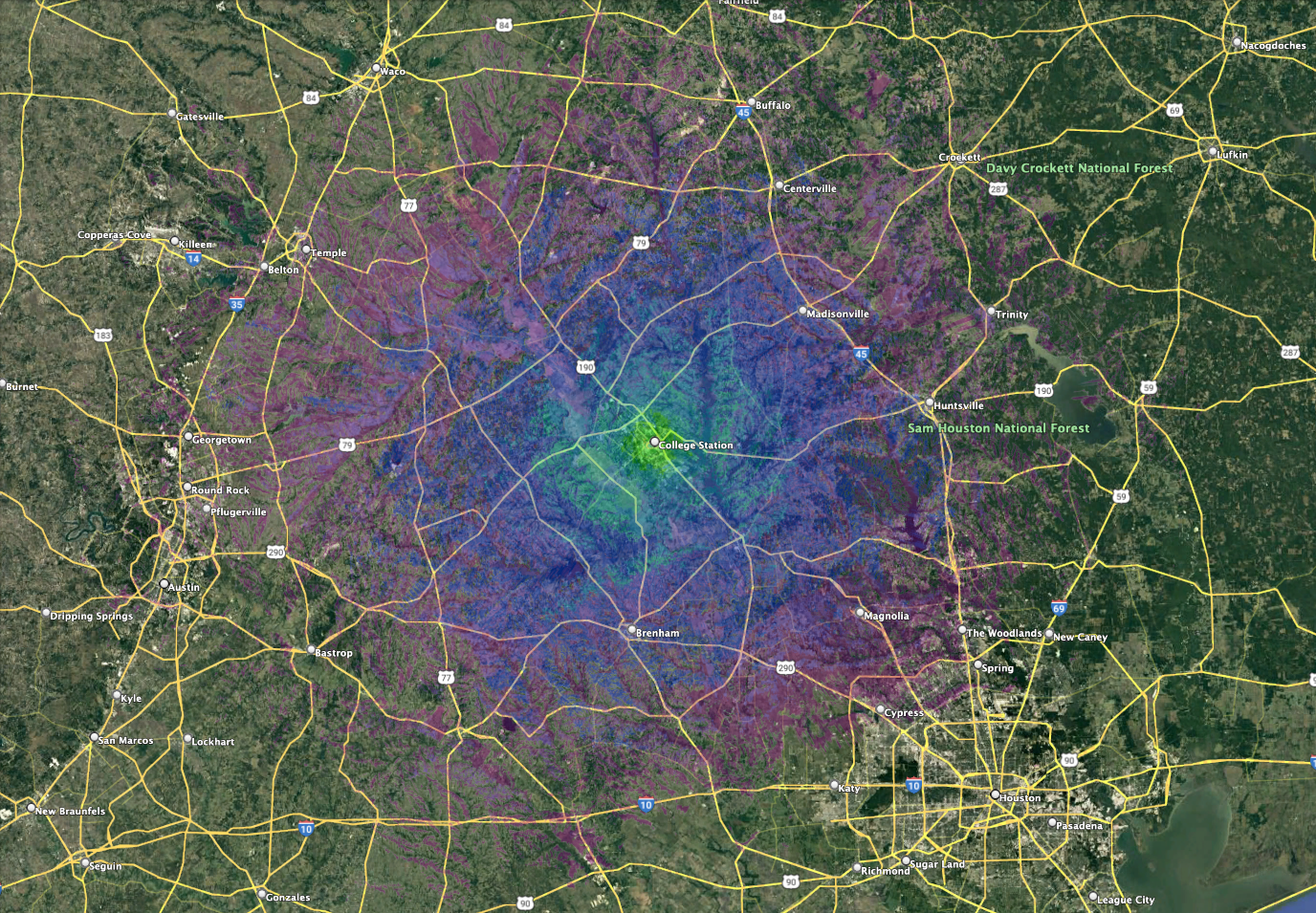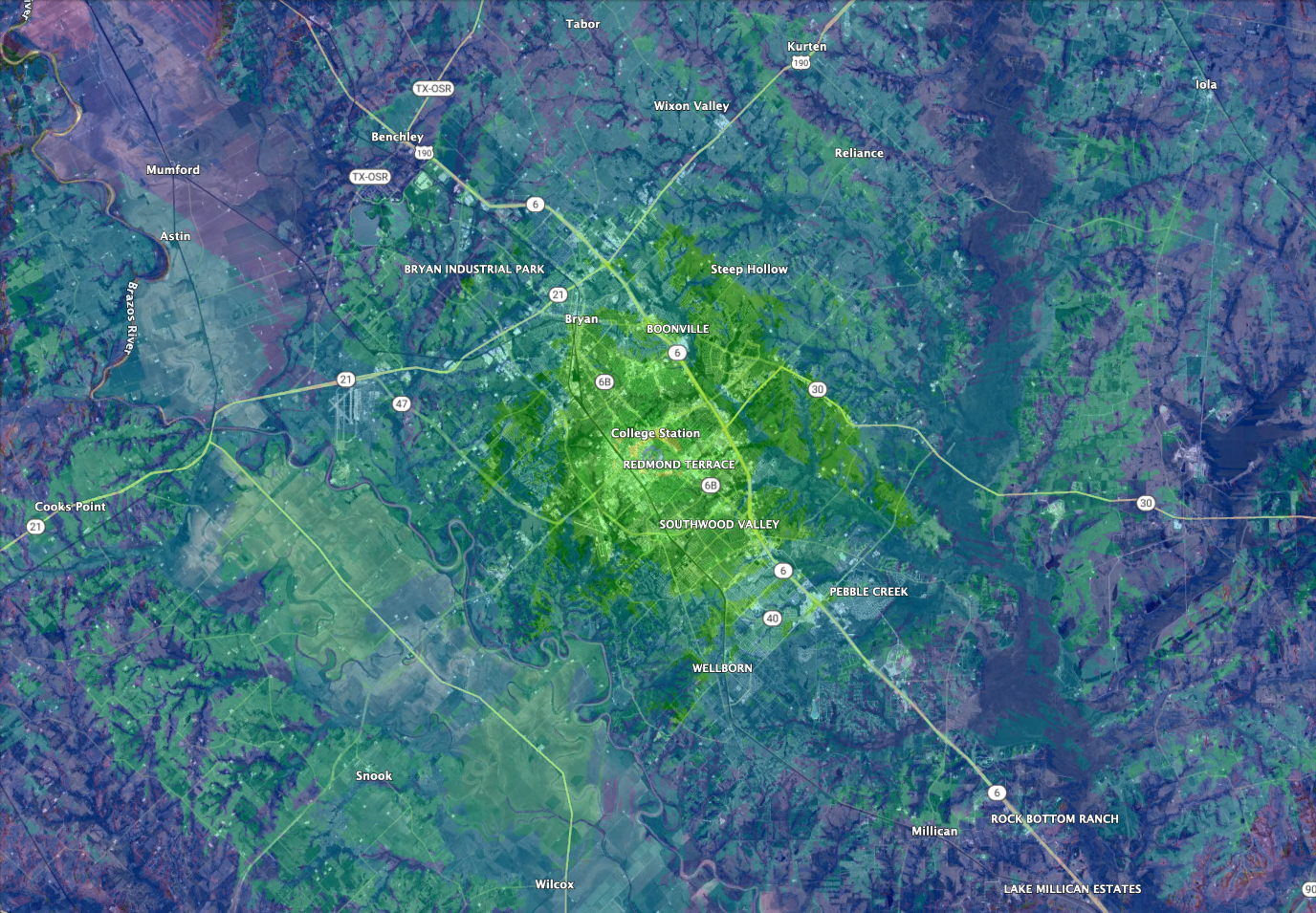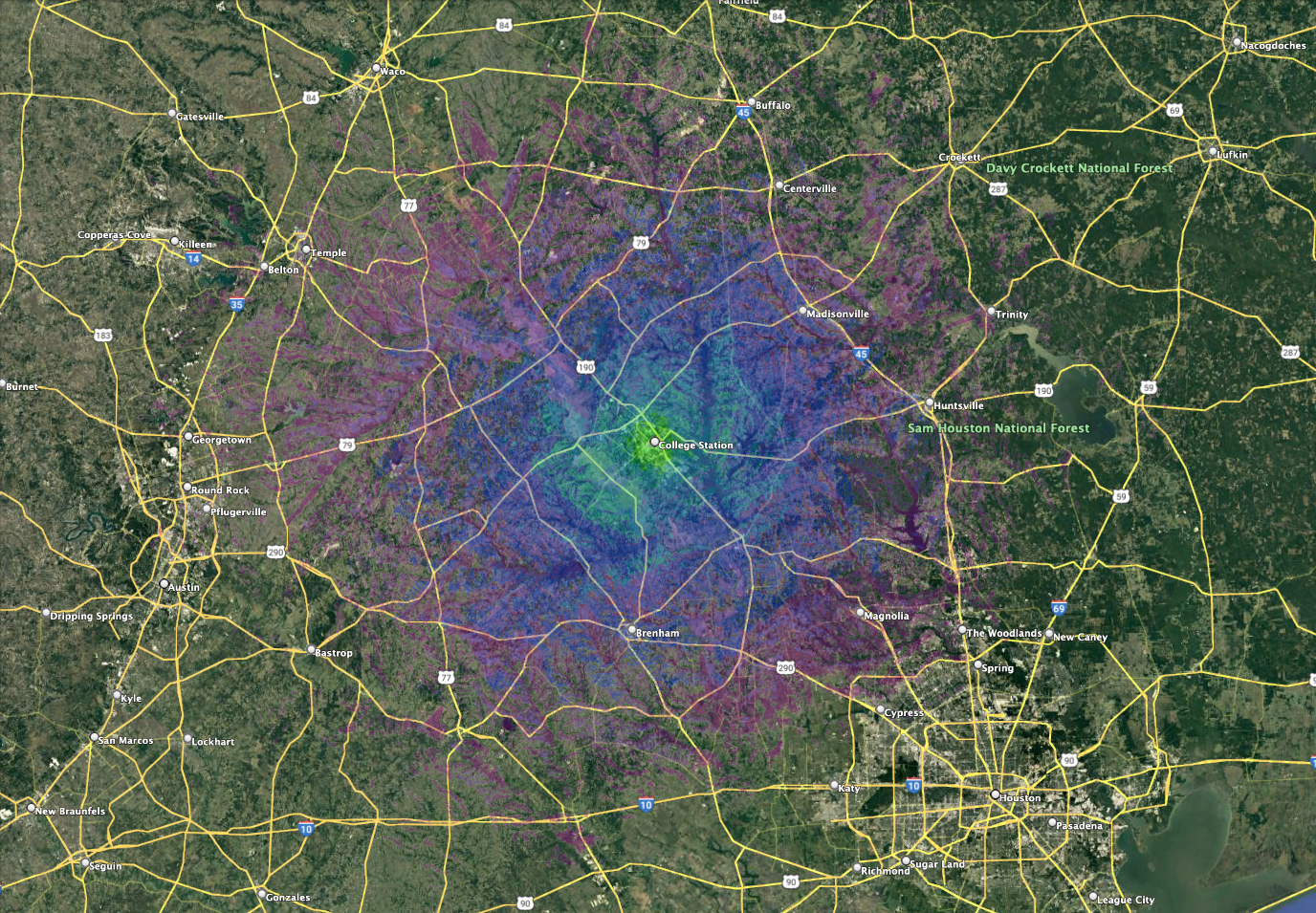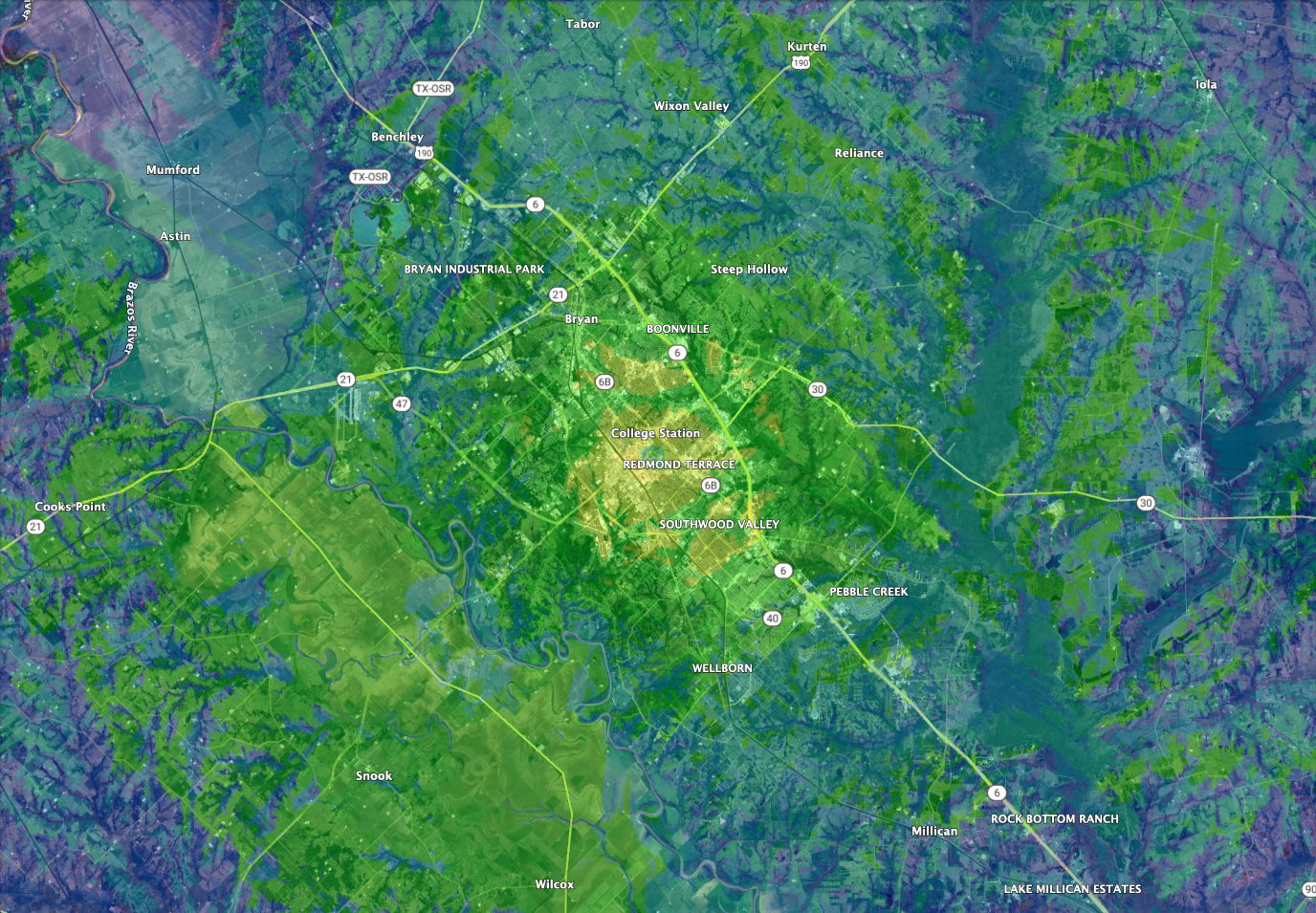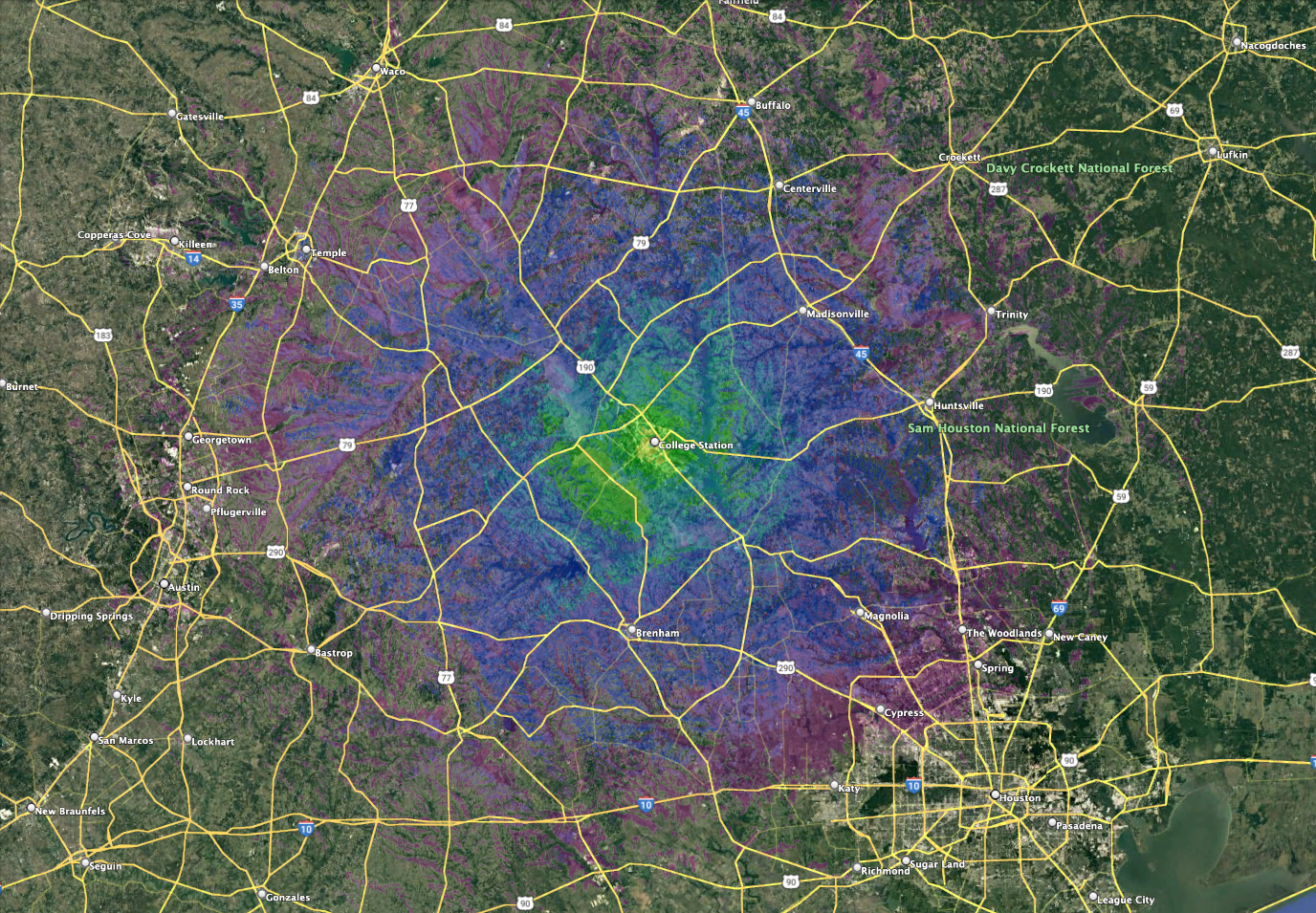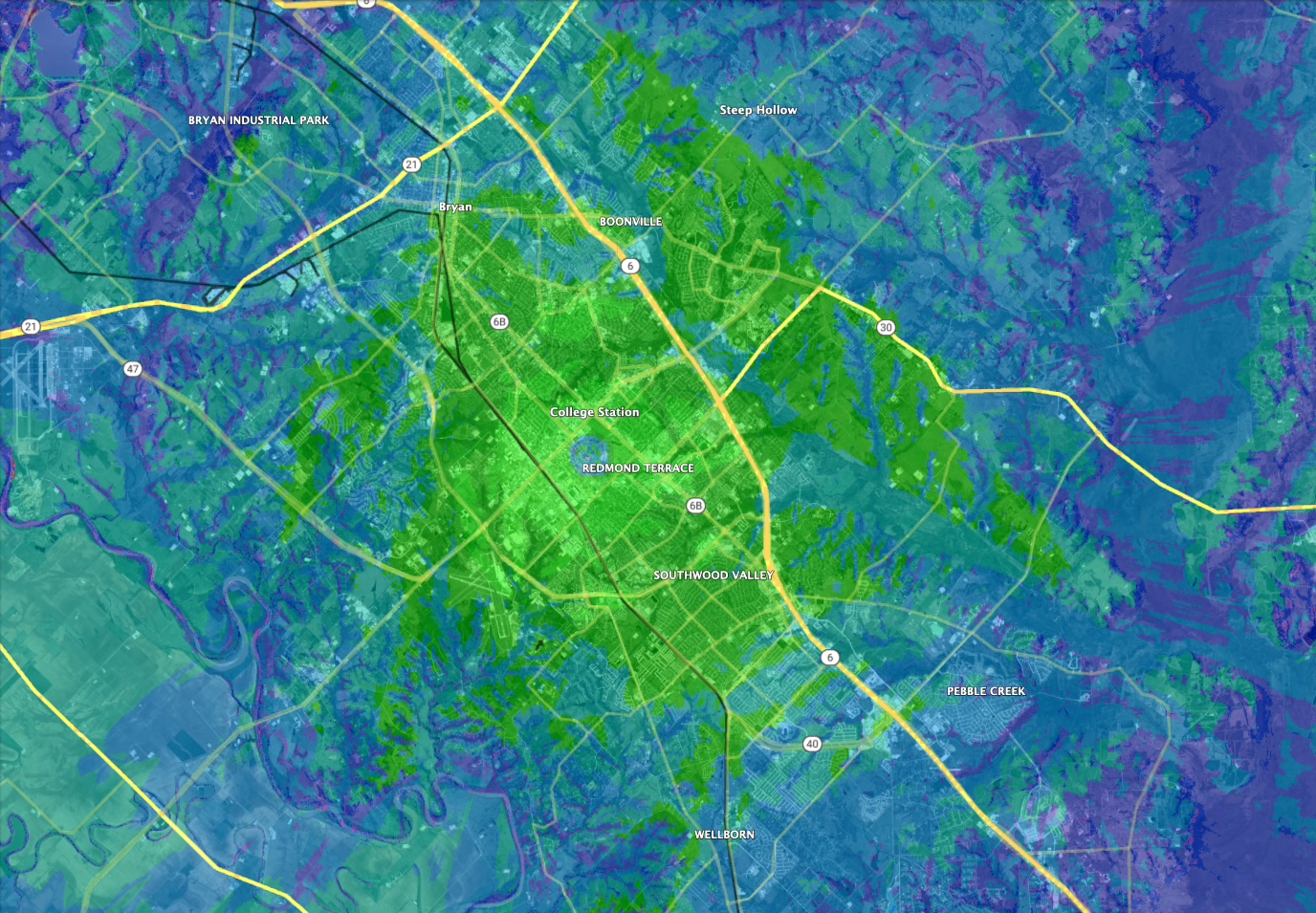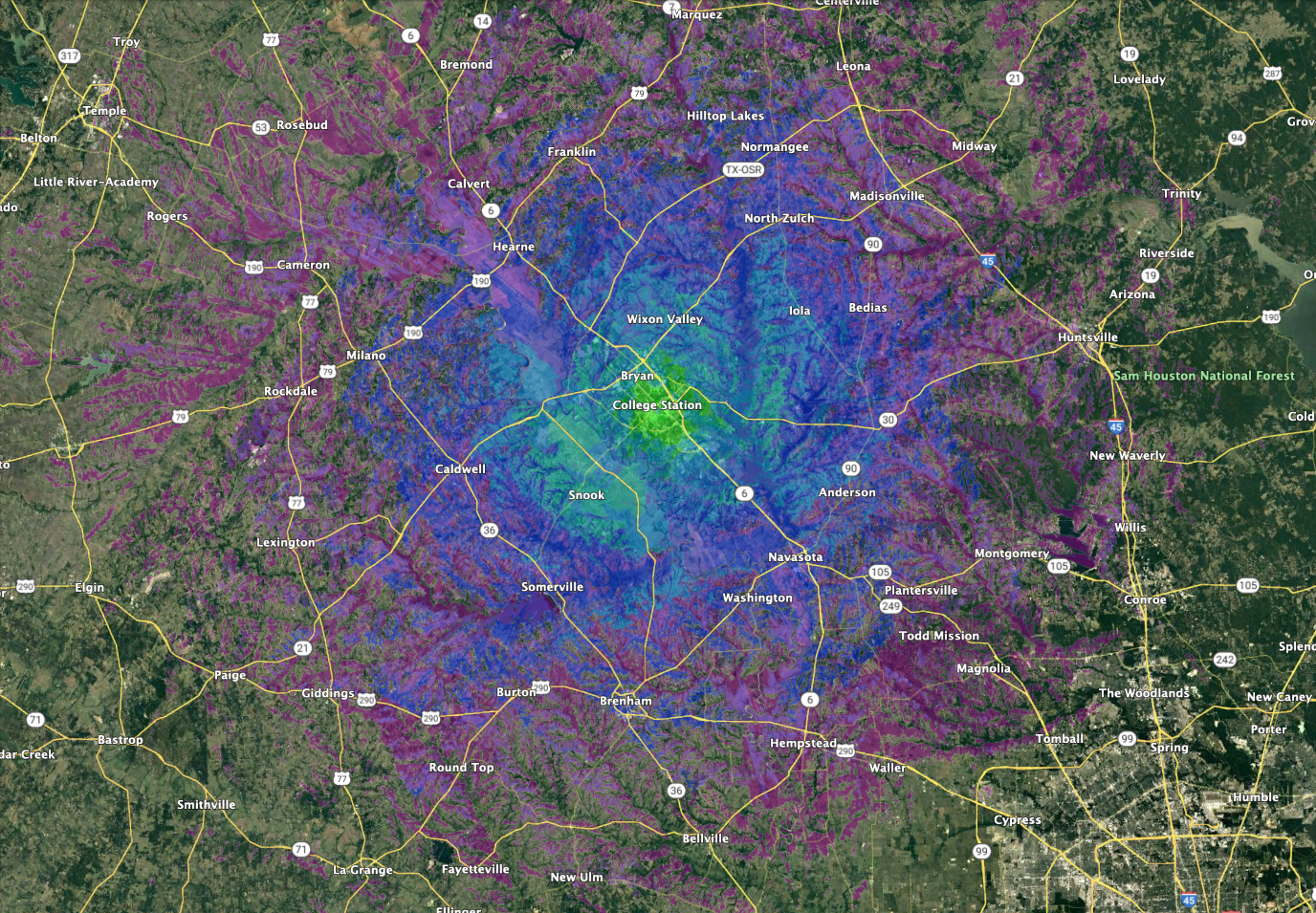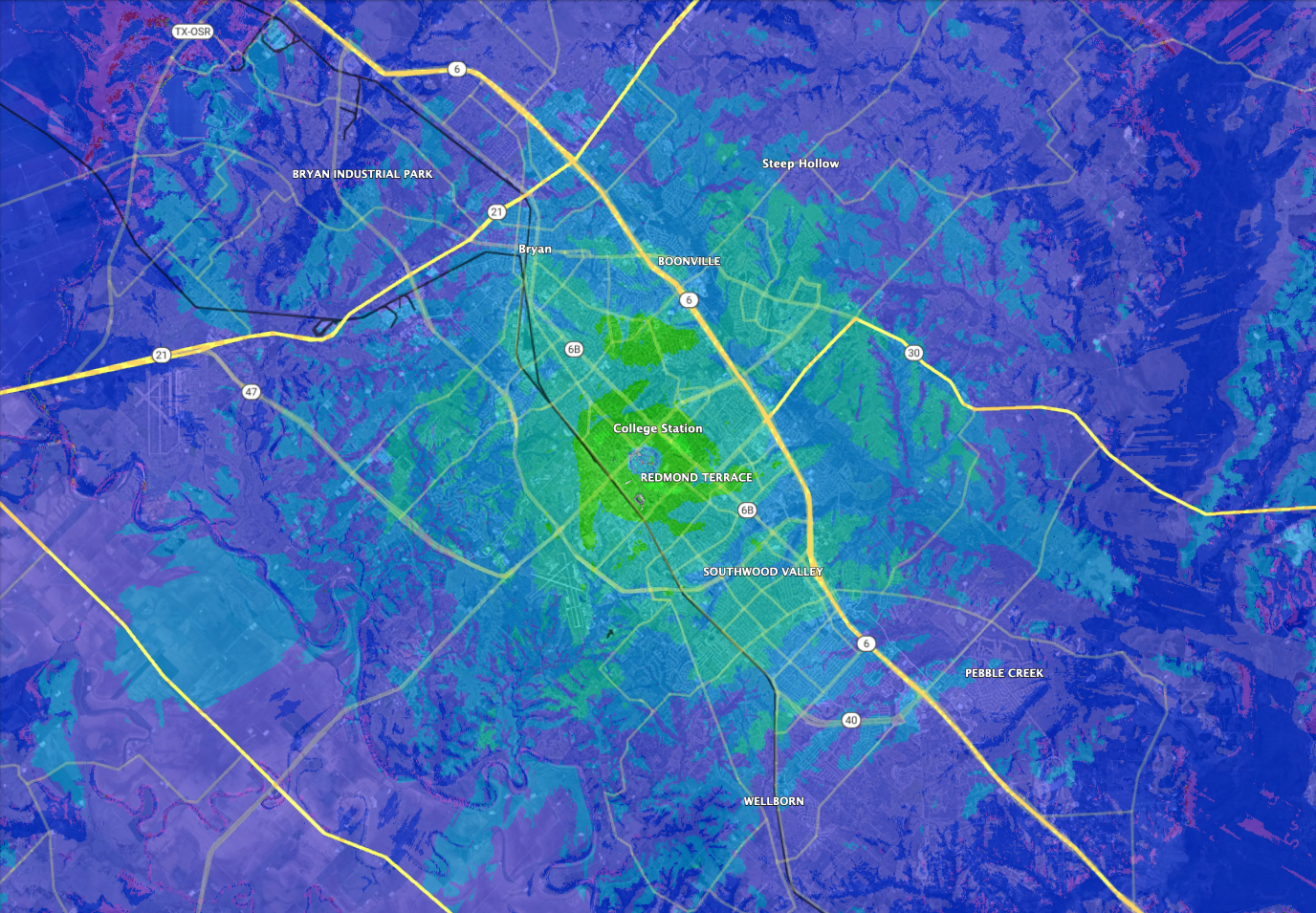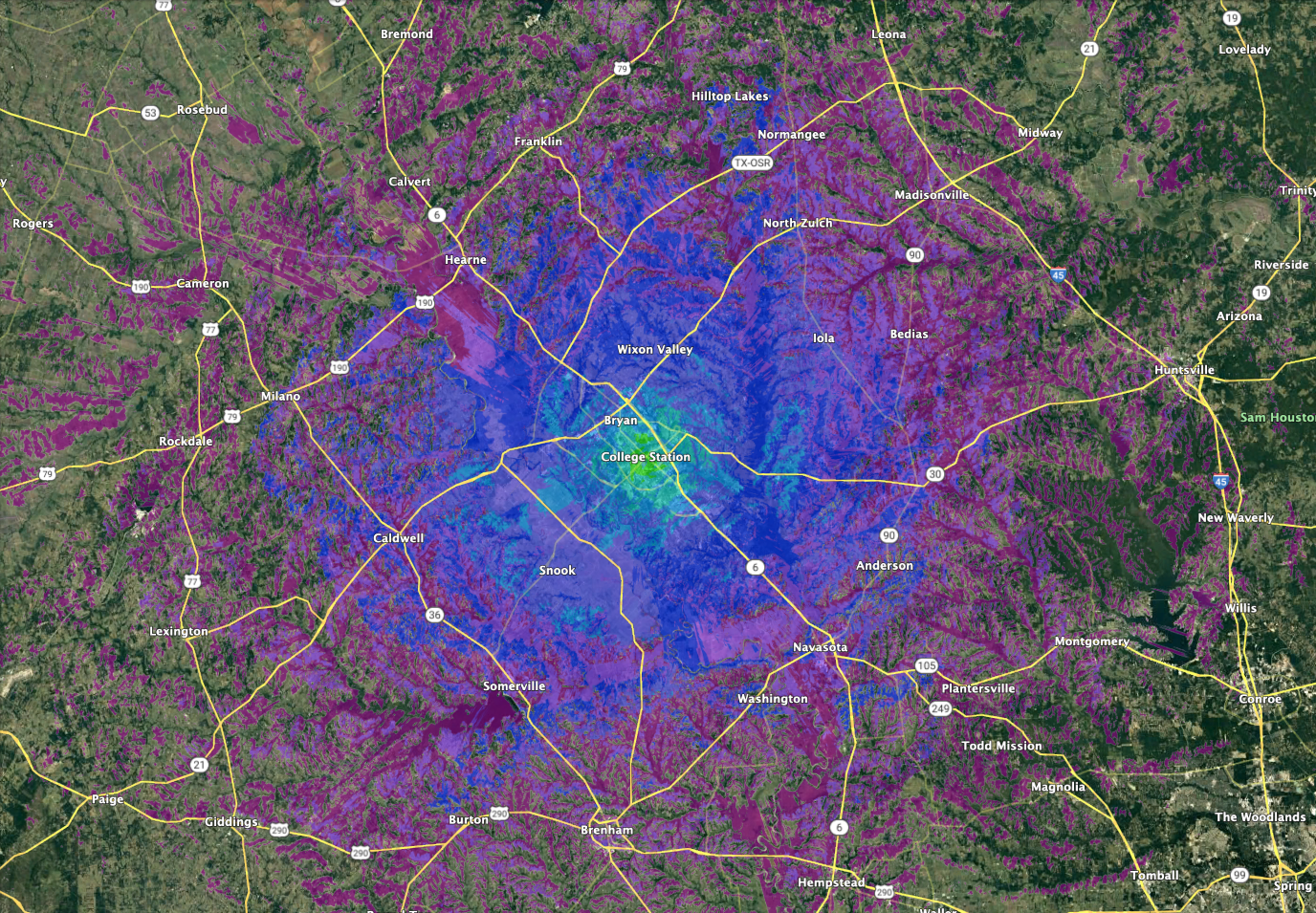W5AC Repeaters
Repeater Summary
| Type | Frequency | Offset | PL | Details |
| 2m FM | 146.82 | -0.6 | 88.5/110.9 | Details |
| 1.25m FM | 223.82 | -1.6 | 88.5/110.9 | Details |
| 70cm FM | 443.05 | +5 | 88.5/110.9 | Details |
| 70cm DMR | 441.3625 | +5 | CC12 | Details |
| AllStarLink | 49381 & 49382 | Details | ||
| Echolink | W5AC-R | Details | ||
| Brandmeister Talkgroup | 3167972 | Details | ||
| Broadcastify | 40779 | Details | ||
| APRS Digipeater | 144.39 | Details |
2m Analog FM
The 2m repeater is currently down.
The repeater transmits on a frequency of 146.82 MHz, and listens on 146.22 MHz. It requires a subaudible tone of 88.5 Hz on receive. The repeater also usually encodes a tone of 110.9 Hz, except during certain nets (the SSTV net, for example) or when we're having intermod problems.
The repeater radio is a TKR-751, with a Henry 110 watt PA, 6 cavity Phelps Dodge duplexer, and a 30 amp GE Mastr II power supply. The controller is an Pi-Repeater-8X, shared with the 1.25m FM repeater, 70cm FM repeater, and AllStarLink node 49381. It is located on the 14th floor of the O&M Building, on TAMU Main Campus. The antenna is a Radio Frequency Systems 220-Series Super Stationmaster omnidirectional fiberglass antenna, on the roof platform next to the radar dish. This gives a height above ground around 160 feet.
The repeater radio puts out 110 watts and has about a 40 mile range with a 50-watt mobile or about 5-7 miles with an HT and a "rubber duck" antenna. There is currently no emergency power capability. The repeater is "open" for use by any licensed amateur radio operator.
1.25m Analog FM
The repeater transmits on a frequency of 223.82 MHz, and listens on 222.22 MHz. It requires a subaudible tone of 88.5 Hz on receive. The repeater also encodes a tone of 110.9 Hz.
The repeater radio is a BCR-220 with a 4 cavity TXRX duplexer. The controller is an Pi-Repeater-8X, shared with the 2m FM repeater, 70cm FM repeater, and AllStarLink node 49381. It is located on the 14th floor of the O&M Building, on TAMU Main Campus. The antenna is a Diamond X2200A omnidirectional fiberglass antenna, on the lower roof. This gives a height above ground around 130 feet.
The repeater radio puts out 30 watts and has about a ?? mile range with a 5-watt mobile or about ?? miles with an HT and a "rubber duck" antenna. There is currently no emergency power capability. The repeater is "open" for use by any licensed amateur radio operator.
70cm Analog FM
The repeater transmits on a frequency of 443.05 MHz, and listens on 448.05 MHz. It requires a subaudible tone of 88.5 Hz on receive. The repeater also usually encodes a tone of 110.9 Hz, except during certain nets (the SSTV net, for example) or when we're having intermod problems.
The repeater radio is a TKR-850, with a Motorola MSF-5000 110 watt PA, 4 cavity Decibel Products duplexer and a 30 amp GE Mastr II power supply. The controller is an Pi-Repeater-8X, shared with the 2m FM repeater, 1.25m FM repeater, and AllStarLink node 49381. It is located on the 14th floor of the O&M Building, on TAMU Main Campus. The antenna is a Diamond X510HD omnidirectional fiberglass antenna, on the lower roof. This gives a height above ground around 130 feet.
The repeater radio puts out 110 watts and has about a 25 mile range with a 50-watt mobile or about 5-7 miles with an HT and a "rubber duck" antenna. There is currently no emergency power capability. The repeater is "open" for use by any licensed amateur radio operator.
70cm DMR FM
The W5AC Brandmeister DMR repeater is made possible with consideration from Mr. Steve Bosshard, NU5D and Dr. John Bosshard, AD5RN.
The repeater transmits on a frequency of 441.3625 MHz, and listens on 446.3625 MHz. It requires color code 12 for access. The DMR ID of the repeater is 312663.
This repeater is connected to the Brandmeister network and the following static talkgroups are always available on the repeater.
| Time Slot 1 | Time Slot 2 |
| TG 3148 - Brandmeister Texas Statewide | TG 31480 - Brandmeister Texas Chat |
| TG 3167972 - W5AC DMR (Linked to AllStarLink 49382) | TG 314891 - Brandmeister Bell County |
Dynamic (PTT activated) talkgroups are allowed on the repeater, and will stay connected for about 15 minutes.
The repeater radio is a TKR-820, with an internal Telewave "flat-pack" mobile duplexer, and its' internal power supply. Digital voice functionality is powered by an MMDVM and Pi-Star. It is located on the 14th floor of the O&M Building, on TAMU Main Campus. The antenna is a Hustler omnidirectional fiberglass antenna, on the roof platform next to the radar dish. This gives a height above ground around 160 feet.
The repeater radio puts out 20 watts and has a range of about 20 miles with an HT and a "rubber duck" antenna inside of a vehicle, based on preliminary testing. There is currently no emergency power capability. The repeater is "open" for use by any licensed amateur radio operator.
To view the current status of the repeater, or see who is talking, click here.
AllStarLink Nodes
If you would like to link to the W5AC repeaters via AllStarLink, please connect to node 49382.
In addition to our RF repeaters, we host AllStarLink nodes 49381 and 49382.
Node 49381 is hosted on the 14th floor of the O&M Building, on TAMU Main Campus. This node is directly connected to the Pi-Repeater-8X, and is linked to the 2m, 1.25m, and 70cm repeaters.
Since this node is behind the University firewall, we are able to link out, but other nodes are unable to connect in. In addition to it's linking duties, this node also hosts a variety of scripts for various purposes like automatically announcing watches and warnings from the National Weather Service, allowing stations to dial DTMF and get the current weather conditions, and providing our Broadcastify feed of the node. To view the current status of the node, or see where it's linked, click here.
Node 49382 is our 'hub' node hosted in the cloud. Since this node is not on campus, other stations should be able to link in to this node and join us. In addition, this node also hosts the connection to our Echolink node and our Brandmeister DMR Talkgroup. To view the current status of the node, or see where it's linked, click here.
Echolink Node
In addition to our AllStar nodes, the club hosts Echolink node W5AC-R. It has been used by club members who've wanted to talk to other members in the greater Bryan / College Station coverage area while they're away.
Recently, we've had a few folks from other countries joining us for contacts and fun! Feel free to drop in and say hi, we love hearing new voices on the air.
Brandmeister Talkgroup
In addition to our AllStarLink and Echolink connections, the club also maintains a link to the Brandmeister DMR network. If you're near a Brandmeister repeater or you've got a DMR hotspot, you can join the conversation. Set your radio for talkgroup 3167972 and you'll be on the air in Aggieland!
Broadcastify Stream
On our AllStarLink node 49381, we host a public stream of all traffic on our repeater. To listen in to Aggieland, click here.
Repeater Controller
The current controller is an Pi-Repeater-8X eight port repeater controller manufactured by ICS Controllers. This controller has eight ports which can each be programmed to function doing just about anything, a full-duplex repeater, a full-duplex link radio, a simplex link radio, a remote base, or a connection to IP linking hardware like AllStarLink.
We currently use the controller to manage the various repeater states, net modes, announcements, and linking/unlinking of the repeaters and links.
While the controller has an extensive built-in speech library, we had some custom recordings made for us by an A&M Meteorology former student.
By default, the controller has all the analog FM repeaters linked together and connected to AllStarLink. We can change these links 'on the fly' as we need.
Repeater Audio Processing
Audio for the 2m and 70cm repeaters have audio processing being performed by a Biamp AudiaFLEX configurable digital signal processor. The processor is currently programmed to perform some basic equalization and compression, along with echo cancellation on the receive audio of both machines.
In the future we plan on adding the 1.25m repeater and AllStarLink node. Additionally, the programming will be modified to ensure that the transmitters will never over-deviate. This will require us to build some new cables and rewire a few things between the controller, the repeaters, and the audio processor.
APRS Digipeater
W5AC maintains an Automatic Packet Reporting System digipeater on 144.39 MHz, the standard APRS frequency in North America. The callsign of the club digipeater/iGate is W5AC-2. It is located on top of the Richardson Building on TAMU Main Campus, with a height above ground of about 150 feet, and a transmit power of about 5 watts.
APRS-equipped hams often beacon their location periodically. When our digipeater receives this signal, it re-transmits it a moment later so that it can be heard over a much wider area. When an internet gateway, or iGate, receives these signals, they are translated and posted on the internet.
APRS can be used for things besides finding the exact position of an amateur radio operator. For example, you can see our county's current National Weather Service radar with APRS stations overlayed on it, and here are some spacecraft in orbit. APRS maps may also include non-moving objects, storm shelters, runners in a marathon, hurricanes and weather warnings, or even a virtual chess board in the middle of the Gulf of Mexico, just to name a few.

